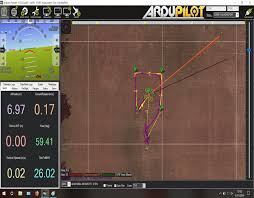¿Sabes cómo encontrar tu UAV tras una caida? ¿Hay alguna precaución que puedas tomar para que sea más fácil encontrarlo? En estos casos, prevenir es mejor que curar.
Vuela sólo cuando haga buen tiempo
Los UAVs vuelan mejor en condiciones climáticas ideales: buena visibilidad, baja velocidad del viento y ausencia de precipitaciones. Es por esto que si crees que los vientos van a ser demasiado fuertes o que la lluvia es inminente, pospongas el vuelo para otro día. Incluso un hexacóptero súper estable puede ser derribado por una ráfaga de viento particularmente fuerte. No te confíes.
Vigila tu batería
Los UAVs más modernos activan automáticamente una función de regreso al punto de partida cuando la batería se está agotando. Sin embargo, cualquier cosa que los ralentice puede recortar dramáticamente la capacidad de las baterías y hacer que el UAV se estrelle contra el suelo. Es por esto que te recomendamos no apurar las baterías para que no termine muriendo tu UAV.
Mira tu UAV como un halcón
La mayoría de los accidentes de UAVs ocurren porque el piloto no estaba prestando atención. Pero a veces no se puede prestar una atención constante y es por esto muy recomendable hacerse acompañar de otra persona que ayude a mantener la vigilancia en caso necesario.
Ten cuidado con las interrupciones de señal
Los cortes de señal son una de las causas más frecuentes de los accidentes provocados por UAVs. En caso de que sospeches que pueda llegar a interrumpirse en algún momento la señal, es mejor tener precaución y no volar demasiado lejos.
Instala un rastreador GPS
El consejo número uno para encontrar tu UAV tiene que hacerse antes de que tu UAV despegue: Ponle un rastreador GPS. Tener un rastreador GPS instalado en tu UAV te ayudará a encontrarlo rápidamente.
Busca tu UAV de inmediato
Un UAV estrellado puede ser arrastrado por otra persona o atropellado por un automóvil. Las posibilidades de que tu UAV se dañe más o se pierda por completo aumentan a medida que pasa más tiempo antes de que lo encuentres. Si tu UAV se estrella, comienza la búsqueda lo antes posible.
















